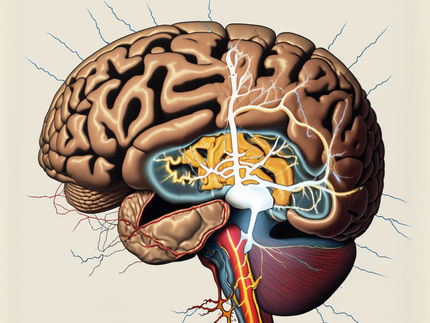The brain creates three copies for a single memory
The ability to turn experiences into memories allows us to learn from the past and use what we learned as a model to respond appropriately to new situations. For this reason, as the world around us changes, this memory model cannot simply be a fixed archive of the good old days. Rather, it must be dynamic, changing over time and adapting to new circumstances to better help us predict the future and select the best course of action. How the brain could regulate a memory’s dynamics was a mystery – until multiple memory copies were discovered.

Early-born neurons (magenta) in the hippocampus create a long-persisting copy of a memory.
Biozentrum, University of Basel
Professor Flavio Donato's research group at the Biozentrum, University of Basel, uses mouse models to investigate how memories are stored in the brain and how they change throughout life. His team has now revealed that in the hippocampus, a brain region responsible for learning from experience, a single event is stored in parallel memory copies among at least three different groups of neurons, which emerge at different stages during embryonic development.
Memory copies come and go, and change with time
First to arrive during development, the early-born neurons are responsible for the long-term persistence of a memory. In fact, even though their memory copy is initially too weak for the brain to access, it becomes stronger and stronger as time passes. Also in humans, the brain might have access to such memory only some time after its encoding.
In contrast, the memory copy of the same event created by the late-born neurons is very strong at the beginning but fades over time, so that if one waits long enough, such a copy becomes inaccessible to the brain. In the middle ground, among neurons emerging in between the two extremes during development, a more stable copy could be observed.
Surprisingly, which copy is used might also be linked to how easy it is to change a memory – or to use it to create a new one. The memories stored for a short time after acquisition by the late-born neurons can be modified and rewritten. This means that remembering a situation shortly after it has happened primes the late-born neurons to become active and integrate present information within the original memory. On the contrary, remembering the same event after a long time primes the early-born neurons to be re-activated to retrieve their copy, but the associated memory can no longer easily be modified. “How dynamically memories are stored in the brain is proof of the brain’s plasticity, which underpins its enormous memory capacity”, says first author Vilde Kveim.
Flexible memories enable appropriate behavior
Flavio Donato’s research team has thus demonstrated that the activation of specific memory copies and their timing could have significant consequences on how we remember, change, and use our memories. “The challenge the brain faces with memory is quite impressive. On one hand, it must remember what happened in the past, to help us make sense of the world we live in. On the other, it needs to adapt to changes happening all around us, and so must our memories, to help us make appropriate choices for our future”, says Flavio Donato.
Persistence through dynamics is a delicate act to balance, one for which we might now have an entry point to fully understand. The researchers hope that one day, understanding what drives memories to be encoded and modified in the brain might help to soften those memories that are pathologically intrusive in our daily life, or bring back some that we thought lost forever.
The ability to turn experiences into memories allows us to learn from the past and use what we learned as a model to respond appropriately to new situations. For this reason, as the world around us changes, this memory model cannot simply be a fixed archive of the good old days. Rather, it must be dynamic, changing over time and adapting to new circumstances to better help us predict the future and select the best course of action. How the brain could regulate a memory’s dynamics was a mystery – until multiple memory copies were discovered.






















































